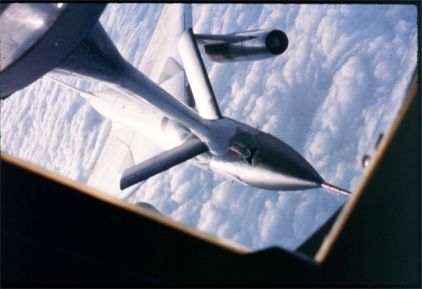The below pictures were taken by Bud Fivecoate who worked on the B-58’s in the mid to late 1960’s. These photos have never been published before. They are copyrighted by Bud Fivecoate and may not be used in any means without his express written consent. Email bud at bud@b-58hustler.com for permission to use them. Special thanks to Bud for these pictures. This page takes a bit of time load, but worth it. These photos were primarily taken at Bunker Hill AFB, home of the 305th, later renamed Grissom Air Force Base after the death of “Gus” Grissom in the Apollo program.
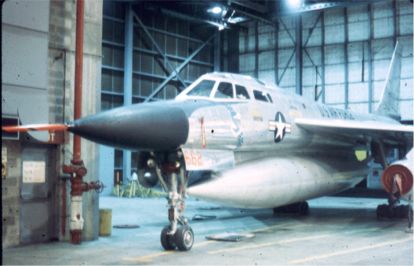
Here is a picture of TB-58A #55-662 sitting inside of the maintenance hanger. 662 was a trainer model (note the additional windows). This plane was used for special tests.

This is what happens to a B-58 when it and an mallard duck collide at Mach 1.7. This is part of the nacelle-mounted supersonic intake and its articulated spike.
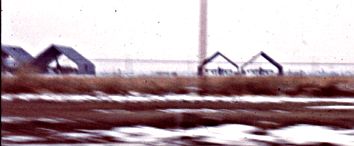
Here is a picture from a slide of the outdoor hangers that housed the B-58’s.
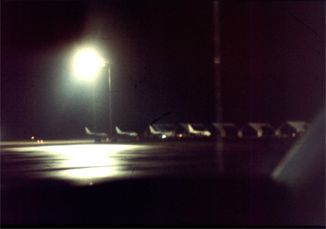
Here are the B-58’s at BHAFB/GAFB waiting at night… Peace was their mission.
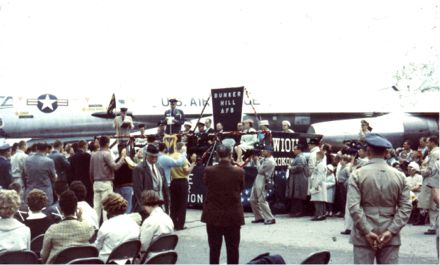
Here is a picture with local radio station WIOU here with the arrival of Hoosier Hustler. The Governor was also here.
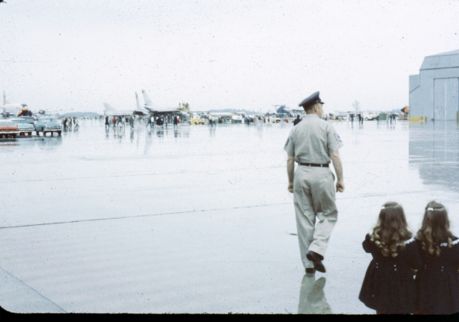
Another picture of an open house, early 1960’s.
Here are pictures of a B-58 getting refueled by a KC-135A from BHAFB/GAFB.

This is the final take off from Grissom Air Force Base of plan 12-078 in early January 1970. This is the next to last plane to leave Grissom to report to the “boneyard”. The crew for the final flight of 078: Frank Ewan(AC) – John Haile (NAV) – Paul Mathis (DSO).
Here are two pictures of 55-662, on its final flight from Grissom Air Force Base out to the boneyard, note the afterburners on. 662 was a trainer. It had very few miles on it. These shots of 662 (and 078 above) are the only known pictures of their final flight from GAFB to Davis-Monthan AFB (boneyard).
Here are the planes at Davis-Monthan AFB (the boneyard). Early years, they were covered (windows) and prepared to be re-activated within 72 to 96 hours. All the planes except 8, were sold for scrap in the mid 1970’s

